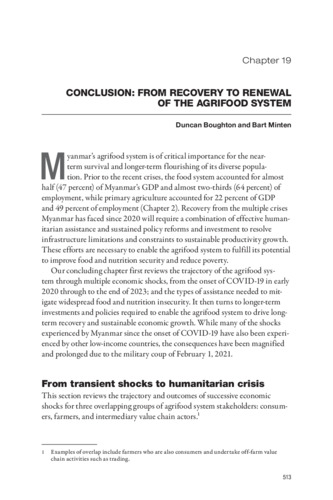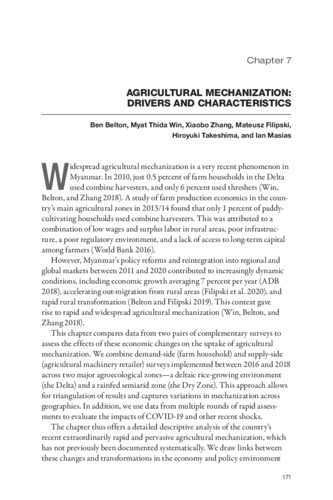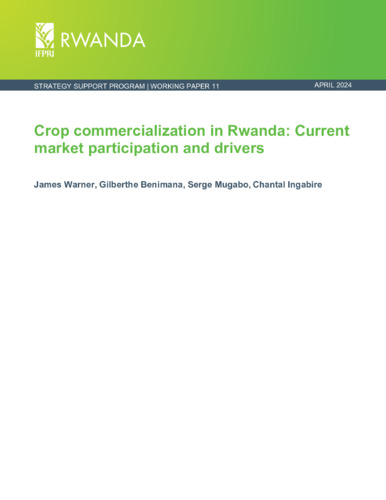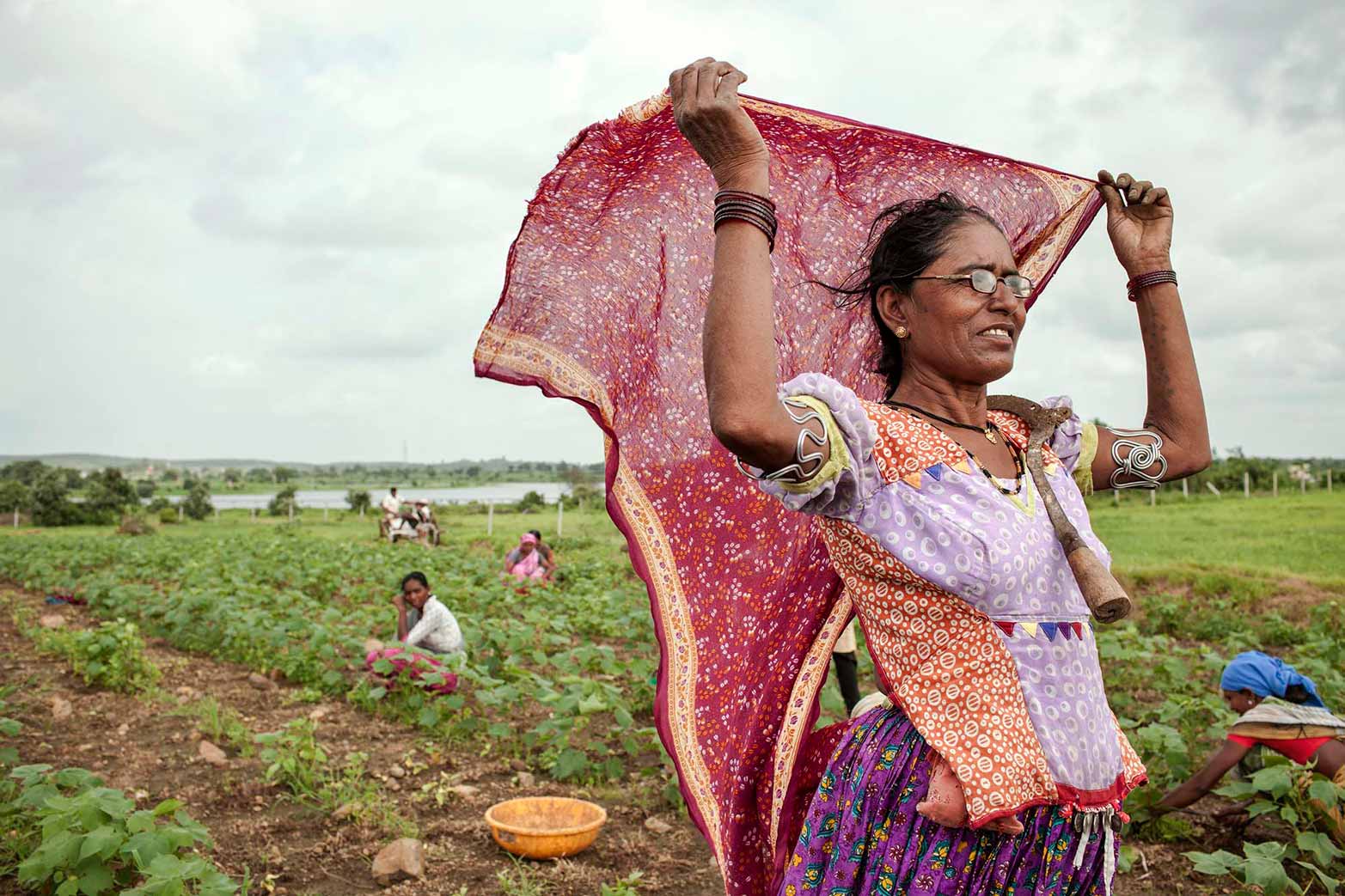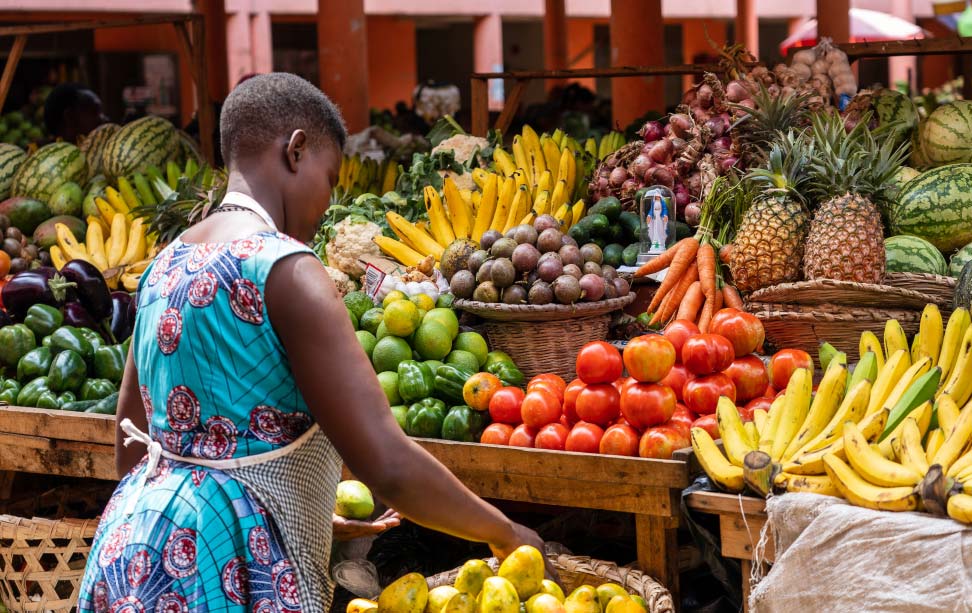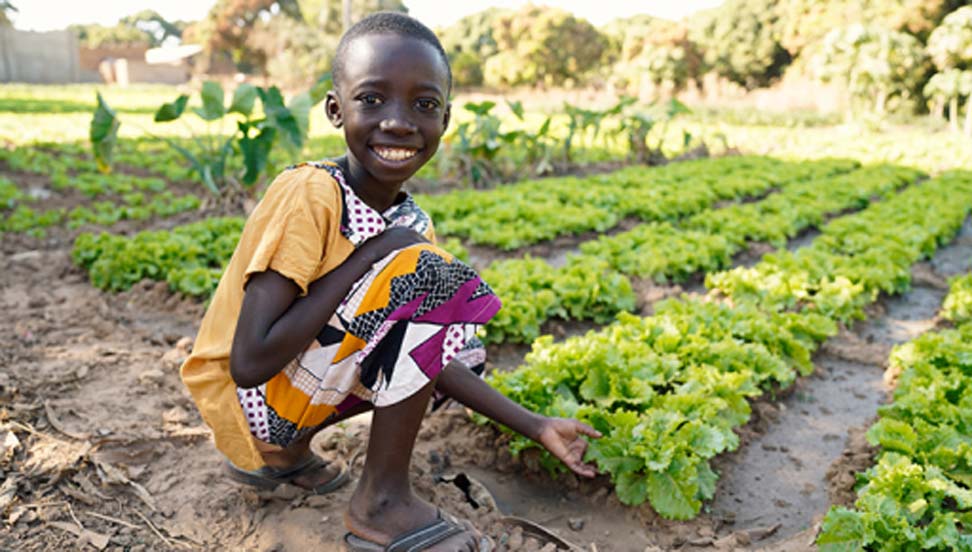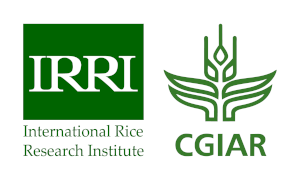Agricultural mechanization: Drivers and characteristics
Widespread agricultural mechanization is a very recent phenomenon in Myanmar. In 2010, just 0.5 percent of farm households in the Delta used combine harvesters, and only 6 percent used threshers. A study of farm production economics in the country’s main agricultural zones in 2013/14 found that only 1 percent of paddy-cultivating households used combine harvesters. This was attributed to a combination of low wages and surplus labor in rural areas, poor infrastructure, a poor regulatory environment, and a lack of access to long-term capital among farmers.
However, Myanmar’s policy reforms and reintegration into regional and global markets between 2011 and 2020 contributed to increasingly dynamic conditions, including economic growth averaging 7 percent per year (ADB 2018), accelerating out-migration from rural areas, and rapid rural transformation. This context gave rise to rapid and widespread agricultural mechanization.
This chapter compares data from two pairs of complementary surveys to assess the effects of these economic changes on the uptake of agricultural mechanization. We combine demand-side (farm household) and supply-side
(agricultural machinery retailer) surveys implemented between 2016 and 2018 across two major agroecological zones—a deltaic rice-growing environment (the Delta) and a rainfed semiarid zone (the Dry Zone). This approach allows
for triangulation of results and captures variations in mechanization across geographies. In addition, we use data from multiple rounds of rapid assessments to evaluate the impacts of COVID-19 and other recent shocks.
Authors
Belton, Ben; Win, Myat Thida; Zhang, Xiaobo; Filipski, Mateusz J.; Takeshima, Hiroyuki; Masias, Ian
Citation
Belton, Ben; Win, Myat Thida; Zhang, Xiaobo; Filipski, Mateusz; Takeshima, Hiroyuki; and Masias, Ian. 2024. Agricultural mechanization: Drivers and characteristics. In Myanmar’s agrifood system: Historical development, recent shocks, future opportunities, Duncan Boughton, Ben Belton, Isabel Lambrecht, and Bart Minten, eds. Chapter 7, Pp. 171-200. https://hdl.handle.net/10568/155170
Keywords
Asia; South-eastern Asia; Agricultural Mechanization; Agrifood Systems; Development; Economic Shock; Governance
